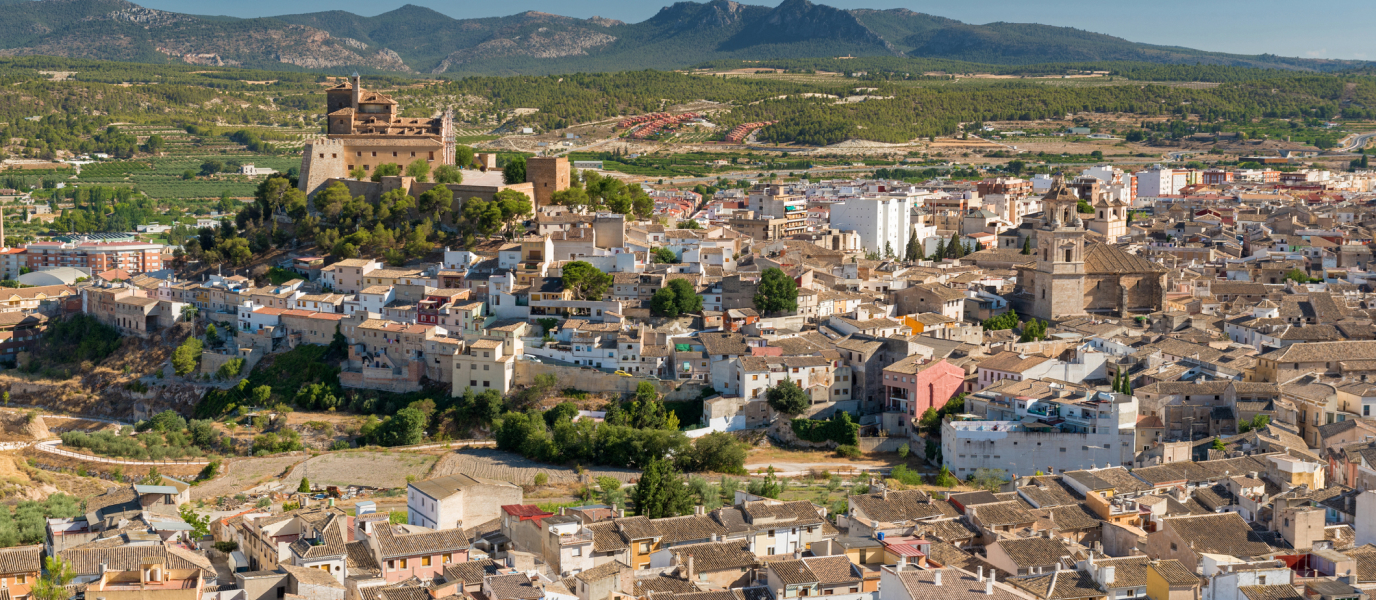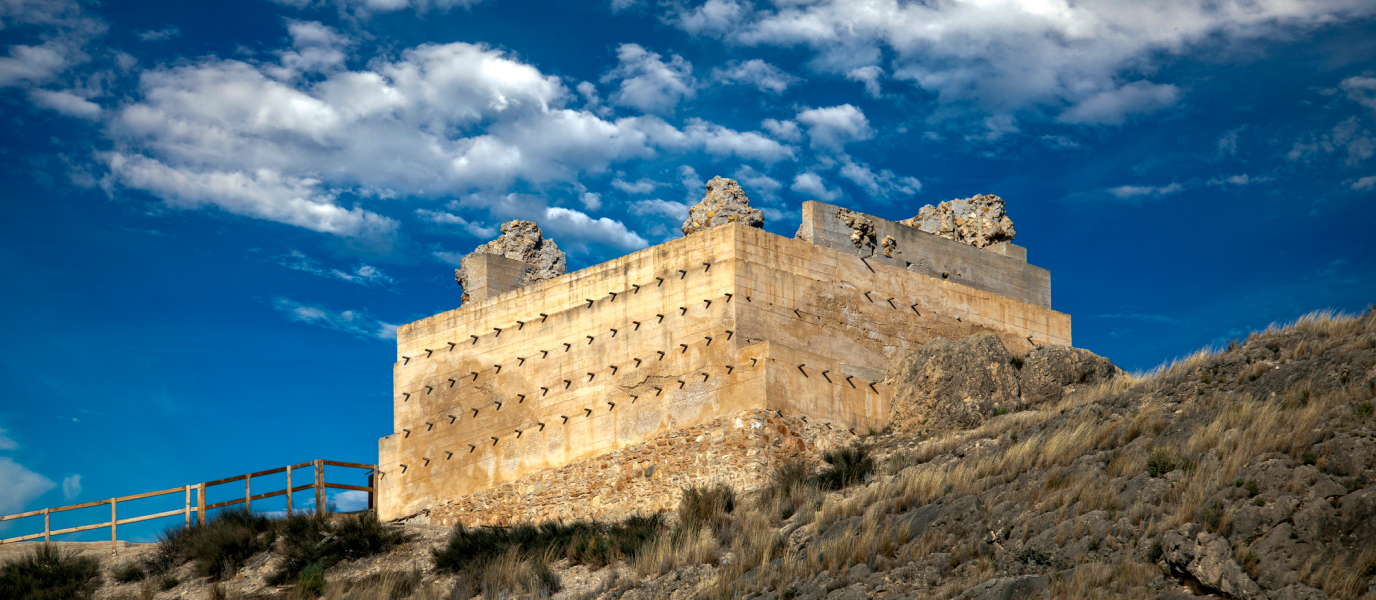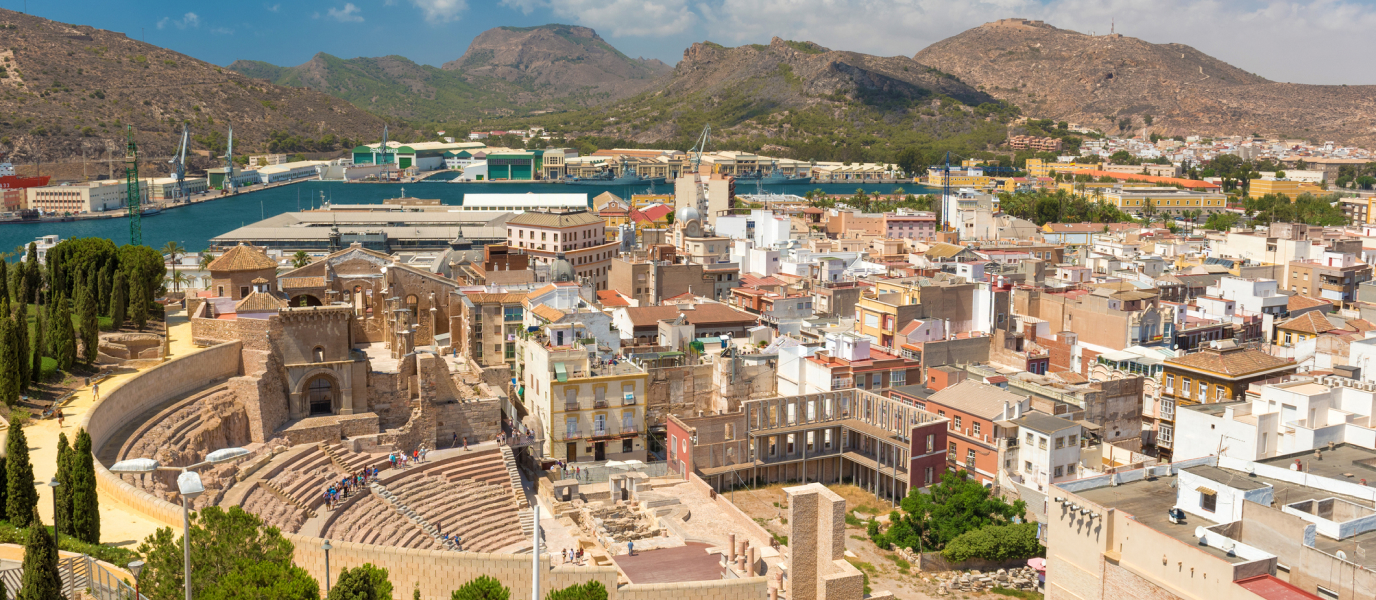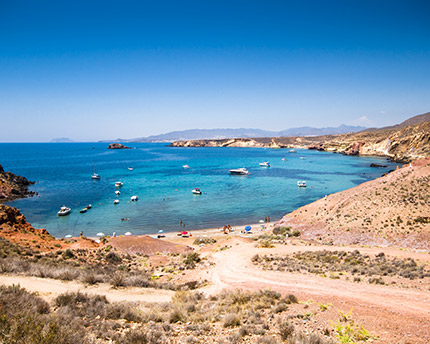Found halfway along the route that joins Murcia and Granada, history reveals that Iberians, Romans and Muslims all occupied Caravaca de la Cruz at one time or another. In fact, the basilica that made the city holy and famous, the Sanctuary of La Vera Cruz, was built following a vision by Moorish king Abú Zeid who ordered the first place of worship to be constructed. The city was later taken by the Order of the Knights Templar, giving the town all the ingredients needed to make it a place of secrets, legends and history.
And yet, despite its wealth of cultural and religious heritage, Caravaca de la Cruz remains one of Murcia’s best undiscovered secrets. It’s genuinely surprising, especially considering its local festival held in May in honour of the True Cross, where horses play a starring role.
Sanctuary of Caravaca
Legend tells that, in 1231, King Abú Zeid had a vision of two angels who came down from the heavens bearing a cross that they gave to a Christian priest, held captive in the castle, so that he could officiate mass.
The basilica that you see today was built in 1617 on top of an old medieval chapel and it has an impressive 18th century Baroque façade made of red Cehegin marble, a material that is obtained close to Caravaca.
The castle’s guardianship is attributed to the Order of the Knights Templar. In fact, the story goes that it was the Knights Templar who brought back a piece of wood from the cross on which Christ was crucified, a lignum crucis, which is enclosed inside an Oriental-style relic. The King of Castille later passed the guardianship of the basilica to the Order of St James, whose symbols can still be seen next to the basilica and across the city.
In 2003, Pope John Paul II decreed that this impressive sanctuary should hold jubilee pilgrimage every seven years. Thousands of pilgrims travel here for 3 May, the Day of the True Cross. The Museum of the True Cross can also be visited inside the basilica.
Castle of Caravaca de la Cruz
The castle is packed with legends and history; built in the typical Muslim style, many date its origins to the 11th century. Alfonso X handed it over to the Order of the Knights Templar, but from the 15th century onwards it was the Order of St James that defended this spot, a place of great defensive and spiritual importance. Its 600-metre-tall watchtower looks out across the Huerta de Murcia to the Sierra del Segura.
The castle currently has 15 towers, a main gate flanked by turrets on either side and an inner bailey where the famous Caballos del Vino [Wine Horses] festival is held today. The castle was a key location during the Peninsular War against the French.
There was once a palace inside but it was pulled down to build the Basilica de la Vera Cruz and the Casa del Capellán, which has spectacular views.
La Chacona or the Keep is one of the oldest towers and it was essential to defending the complex.
The fortress has huge walls and a surprising network of cisterns, which meant residents could store rainwater here during periods of siege.
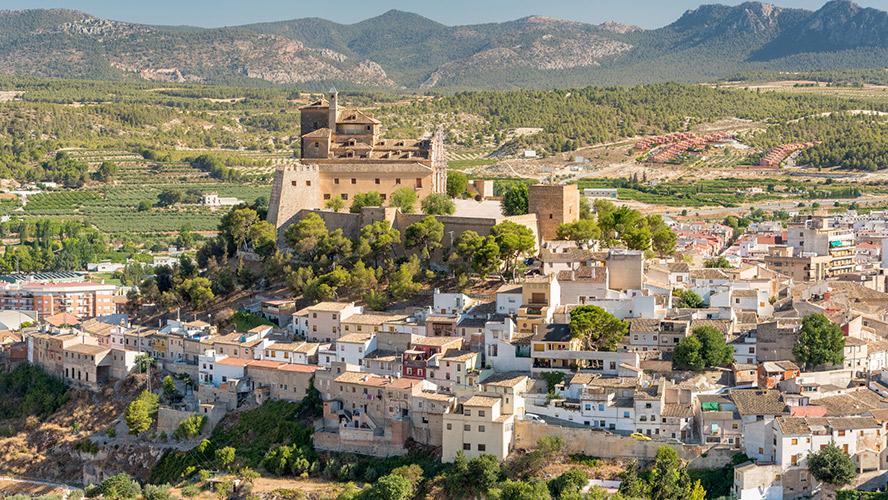
Parish church of El Salvador
The Church of El Salvador is an excellent example of Caravaca’s 16th century Renaissance style. You would never guess that it is unfinished when you head inside and admire the four soaring columns that stand almost two metres tall and support the lierne vaulting.
The interior contains a wealth of heritage in the form of sculptures and paintings, with a particularly noteworthy high altar that was obtained from the disentailed church of the Jesuits.
Museum of the Wine Horses
The stately home of the Muso Muñoz Melgarejo family, which dates from the 18th century, is today the House-Museum of the Wine Horses. Different media are used to explain this traditional local festival that can be traced back to the Middle Ages when a group of Knights Templar tore through the Muslim defences on horseback to reach the castle. Today, every 2 May, the members of more than 60 clubs belonging to the Bando de los Caballeros del Vino climb the steep medieval streets to the inner bailey of the castle with their horses. The festival has three different sections: the Hair [Undecorated] Horses, the Parade and the Race.
Archaeology Museum
The La Soledad Municipal Archaeology Museum stands on the original parish church of El Salvador. The museum contains discoveries from different excavations that have been carried out in the city and surrounding area, such as the Ibero-Roman complex of La Encarnación. It’s a fascinating museum that gives you sense of Caravaca’s importance in the history of Murcia and eastern Spain.
Fuentes del Marqués Natural Park
This 17.4-hectare natural park also features in the legends of princesses and Knights Templar that are so important to Caravaca de la Cruz. It’s said that there was once a secret passageway that led from the castle to the springs in the park. One day, a knight discovered the passageway and, when he reached the river, saw Princess Ayla and fell in love. From that moment onwards, Las Fuentes del Marqués became the place of their romantic trysts. However, one day the king was riding through the park, heard a noise that he thought was a bear and shot into the bushes, killing his daughter. When he realised what had happened, he blamed the Knight Templar.
While this may be a legend, what is certainly true is that the park is a wonderful place to go walking among a huge variety of plant and tree species, including poplars, Canary Island pines, ash trees and holm oaks, and it also has plenty of fauna. Tread softly as you explore the park and you may well spot squirrels, owls, hoopoes and nightingales.
Particularly noteworthy spots include Las Cuevas del Marqués and the Torreón de los Templarios, which has mysterious origins. The current tower was built on top of an older one, and the earlier construction was mentioned as far back as the 13th century by Arabic geographer al-Himyari.
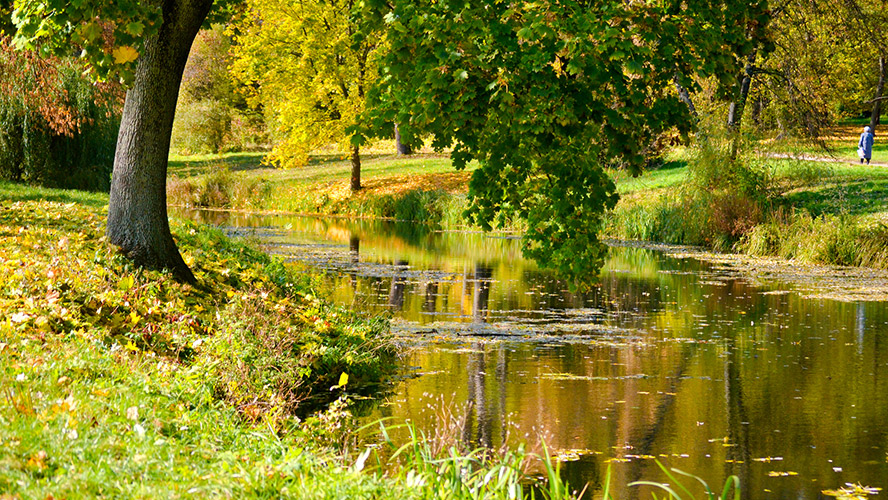
The Templete
This is one of the city’s most emblematic monuments as a result of its symbolic value, rather than its architectural importance. The Templete is an 18th century Baroque building with a hexagonal floor plan and dome covered in Arab tiles that rests on a drum. The Templete stores water from Las Fuentes del Marqués, a place with huge mystical significance to locals; according to tradition, a plague of locusts attacked the fields here in 1384 and the True Cross was used to bless the water to drive them away. Every 3 May ever since, the relic has been borne to the Templete and “bathed” in its waters to make them miraculous. In fact, the building is also known as “El Bañadero” [“The Bath”] due to this ritual.
Where to eat in Caravaca de la Cruz
If you’re visiting Caravaca, you have to try the famous cocido con pelotas [dumpling stew]. It’s a hearty, traditional dish that you’ll find in traditional restaurants such as El Casón de Reyes. Other good restaurants include Fuentes del Marqués and the terrace of El Casón de los Reyes.
Where to stay in Murcia province
If you’d like to be surrounded by history during your trip, even at night, the Occidental Murcia Siete Coronas is a four-star hotel that makes a great option after visiting Caravaca de la Cruz. It’s one of the most modern hotels in Murcia and is right in the heart of the city.
It has 156 rooms, many with views of the city, and is a great way to enjoy Murcia’s daytime activities and nightlife – and don’t miss the wonderful Bistrol restaurant and its terrace. The hotel has a car park and also welcomes pets, so it’s the perfect option when the whole family is travelling together.




































































